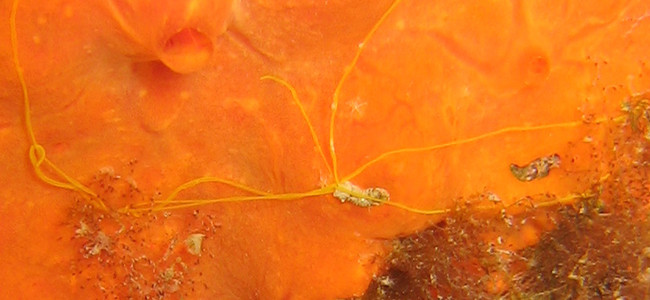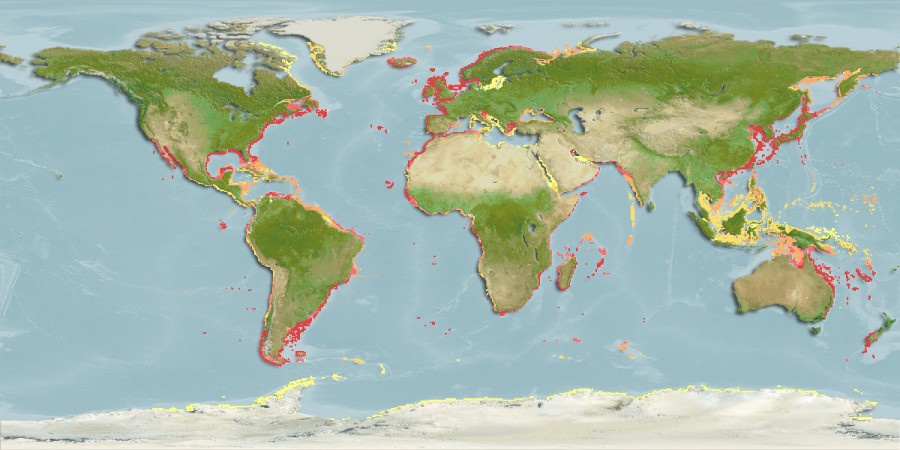Eupolymnia nebulosa, commonly known as the spaghetti worm, is a species of bristle worms that belongs to the family Terebellidae. The scientific name derives from the Greek ‘Eu‘, meaning ‘well‘, and ‘polymnia‘, referring to the Greek muse of poetry and hymns, alluding to its striking shape and long tentacles, while ‘nebulosa‘ refers to its nebulous or diffuse appearance due to the distribution of its tentacles over the substrate. This species inhabits the seabeds of the northeastern Atlantic and the Mediterranean, and is common in sandy and muddy areas, where it builds tubes in which it hides. It is usually found at depths of up to 200 meters, but it also inhabits intertidal areas.
Eupolymnia nebulosa is characterized by an elongated, segmented body that can measure up to 20 cm in length. One of the most distinctive features of this species is the presence of numerous long, thin, filamentous tentacles, which can extend several times the length of the worm’s body. These tentacles, usually white or pale yellow, are used to gather food particles from the surrounding substrate. The worm’s body is cylindrical and segmented, with coloration ranging from brown to reddish tones, often with darker spots. Compared to other terebellid species, such as Terebella lapidaria, Eupolymnia nebulosa is easily distinguishable by the length and number of tentacles it uses to feed, as well as by the silkier texture of its body.
Regarding its feeding habits, Eupolymnia nebulosa is a detritivore that primarily feeds on decomposing organic particles found in the sediment. Its long tentacles are extremely sensitive and extend across the surface of the substrate, capturing organic debris, microscopic algae, and small invertebrates. The tentacles then coil the particles and transfer them toward the mouth, which is located at the front of the body. This process allows the worm to feed efficiently while remaining protected inside its tube, minimizing its exposure to predators.
Reproduction in Eupolymnia nebulosa is sexual, with individuals of separate sexes (dioecious). Fertilization is external and occurs when males and females release their gametes into the water, where fertilization takes place. The resulting larvae are planktonic and go through several developmental stages before settling on the seabed and metamorphosing into juveniles that begin constructing their own tubes. During this development process, the larvae can be carried by ocean currents, facilitating their dispersal into new areas.
An interesting aspect of Eupolymnia nebulosa is its ability to build sediment tubes, which provide protection and stability in a potentially unstable environment. These tubes are made of sediment particles and mucus secreted by the worm and can reach up to 30 cm in length. Moreover, due to its sedentary lifestyle and dependence on substrate quality, this species is used as a bioindicator in studies on the health of benthic ecosystems. It also plays an important ecological role by contributing to bioturbation, the process of mixing and aerating marine sediments, which promotes nutrient circulation in the ecosystem.
Photos:


 from
from